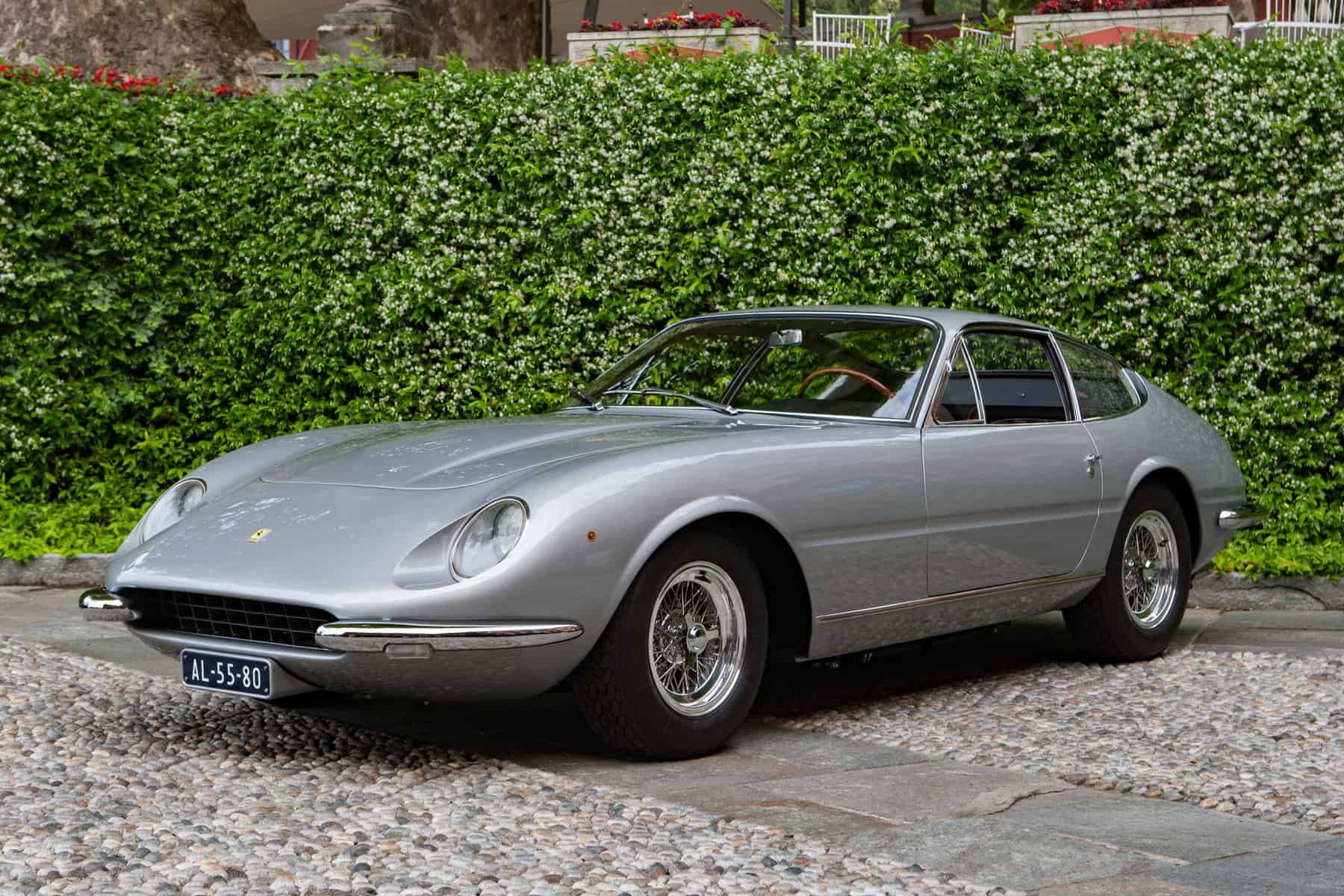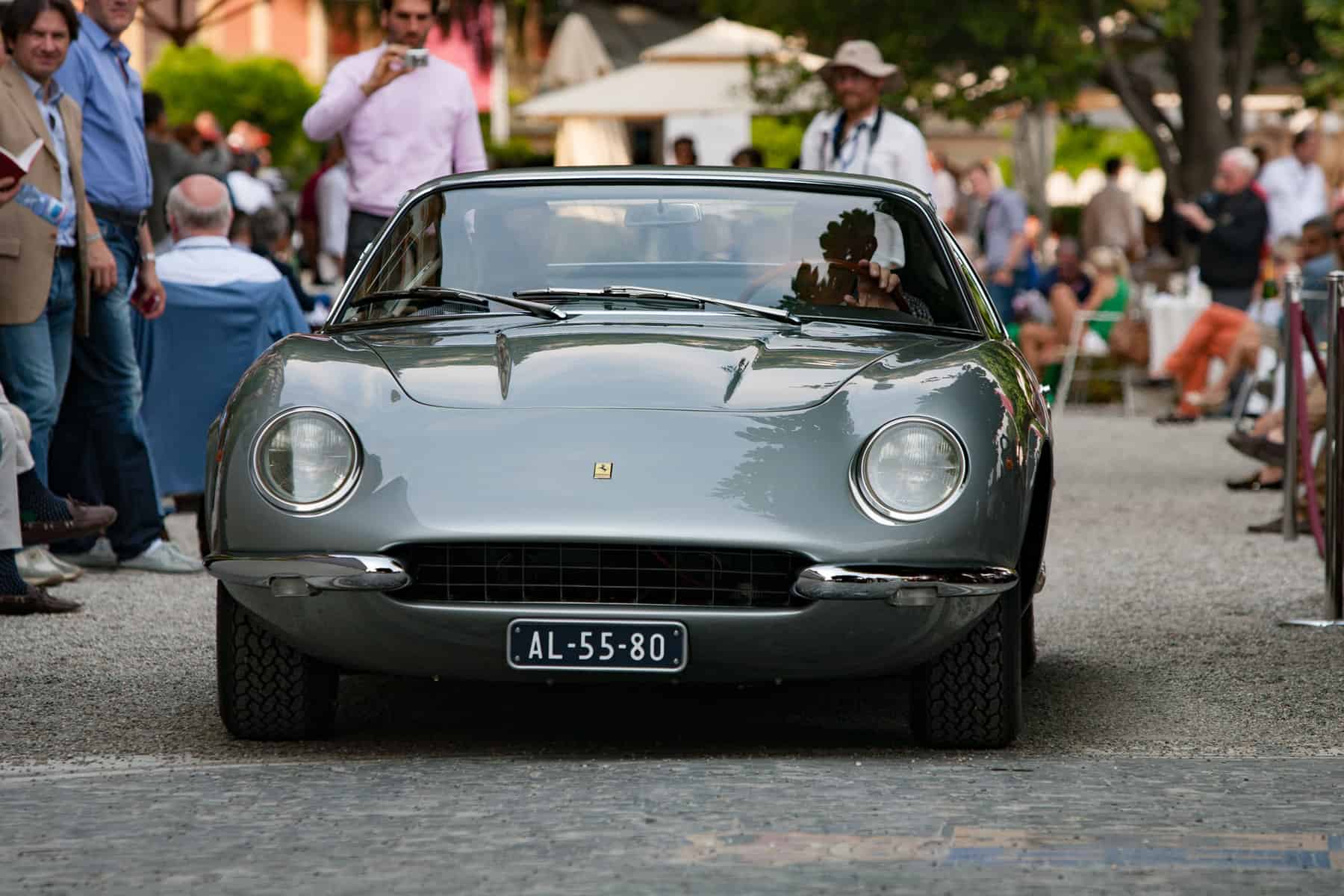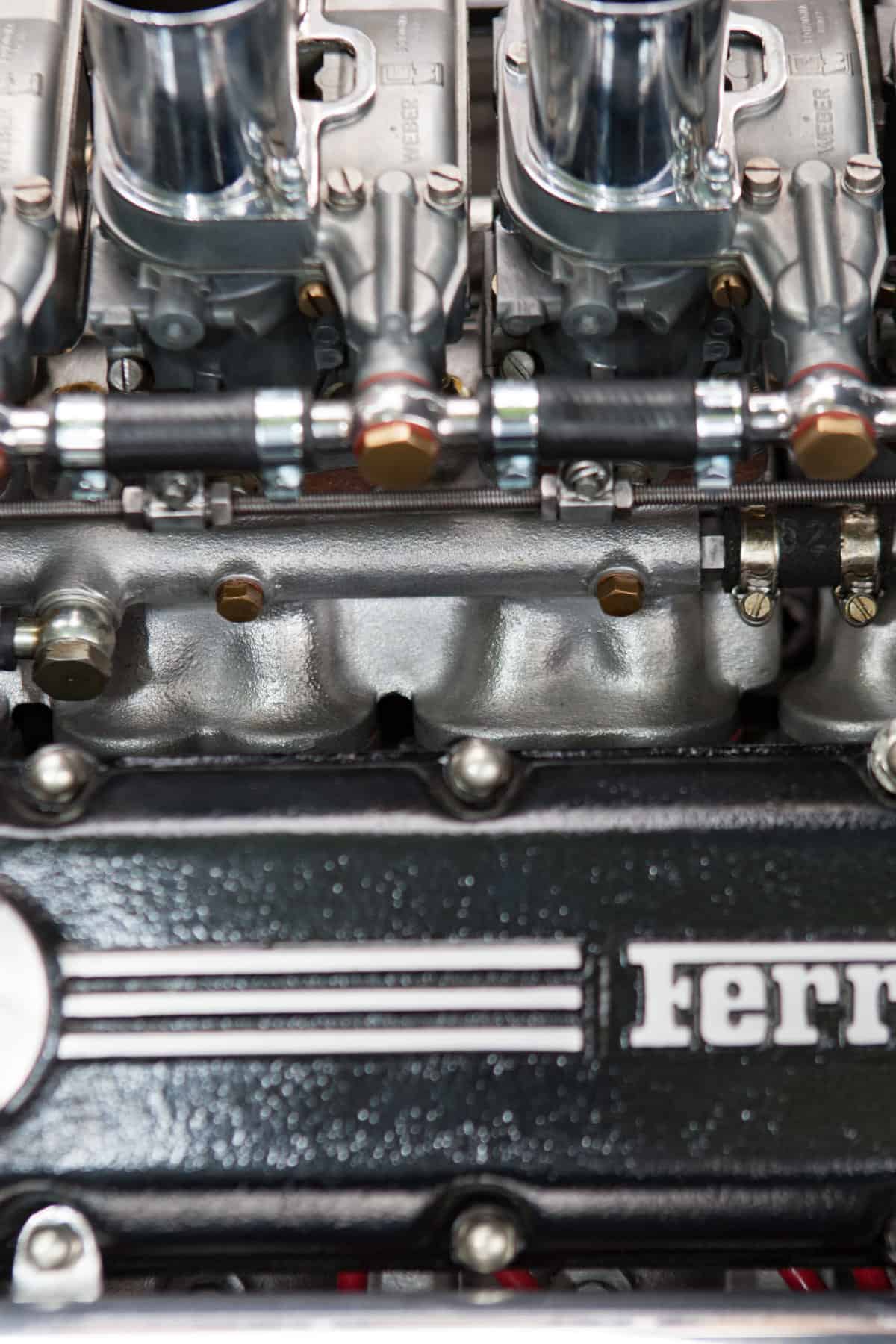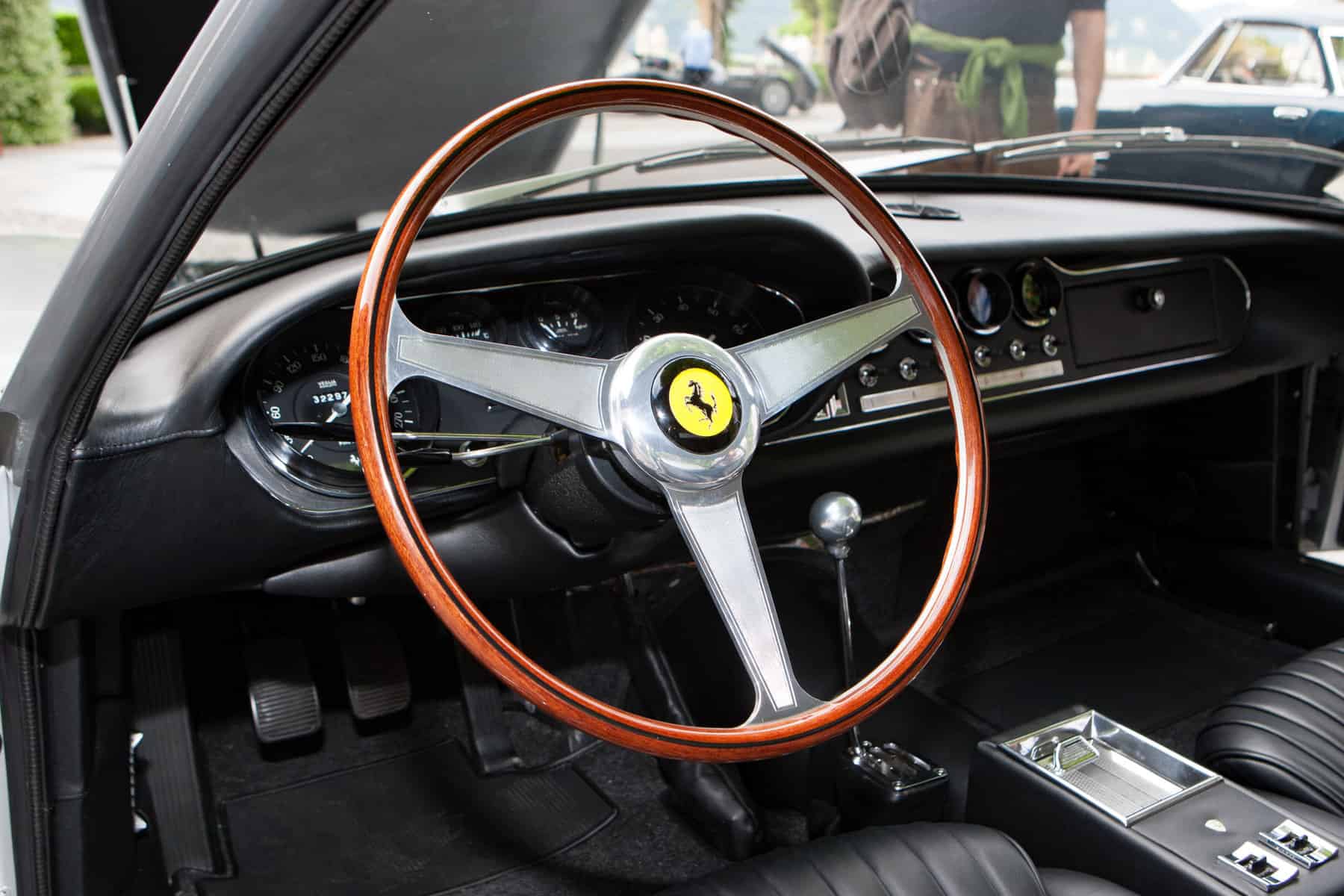Ferrari 365 GTB/4 Prototype
The last of the breed of front-engined Gran Turismos
WORDS & IMAGES BY: WOUTER MELISSEN
For Ferrari, 1968 was a year of profound change. Behind the scenes, Enzo Ferrari was hard at work securing the future of the company by selling half of it to Fiat.
A more immediately visible step forward was the launch of a brand-new Grand Tourer, the 365 GTB/4 “Daytona,” at the Paris Auto Salon in the fall. The sharp lines of the new 365 GTB/4 seemed a clean break from the elegant, flowing lines of the 275 GTB/4 it replaced. Remarkably, two prototypes have survived that give us an insight into how Ferrari, Pininfarina, and Scaglietti got from one to the other.
First shown at the 1964 Paris Auto Salon, the 275 GTB followed Ferrari’s tradition of evolutionary designs. Compared with the 250 GT Lusso it replaced, the 275 GTB did feature some major improvements. Apart from the revised styling and slightly larger V12 engine, it also featured a five-speed transaxle and independent rear suspension. Between the fall of 1964 and 1968, the 275 GTB was subject to Ferrari’s traditional, gradual evolutions. First a long-nose version of the body was created and then the four-cam 275 GTB/4 was introduced. Regardless of the version, Scaglietti could also fit the 275 GTB with an alloy instead of a steel body.
During the same period, Lamborghini smashed the rulebook by abandoning the traditional front-engine, rear-wheel-drive concept used for high-end sports cars for decades. Instead, the Miura featured a mid-mounted, transverse V12 engine. Ferrari had plenty of experience and success with mid-engined sports racing cars, but the company was not quite ready, and more importantly, did not have the means to create a road car with the V12 mounted behind the cabin. This was one of the reasons why the company turned to Fiat. Exploring the various options for the 275 GTB/4 replacement may also explain the unusual delay of the 365 GTB/4’s launch; many months after the last 275 GTB/4 had rolled off the line.
Eventually, it was decided that the 275 GTB/4’s replacement was going to be another classic front-engined Grand Tourer. With the Miura offering new levels of performance and a major step forward in design, the Ferrari engineers and the designers at Pininfarina had their work cut out. Neither started with a clean sheet of paper but instead initially opted to carry over what worked on the 275 GTB/4 with added improvements. When looking at the two interim prototypes, it becomes clear that it was decided to restrict the mechanical improvements but push the envelope on the stylistic changes a little further.
The first of these prototypes was built on a chassis that had the same tried-and-trusted layout as used by Ferrari for many years. It consisted of two large-section oval tubes with considerable cross-bracing to add rigidity. A separate subframe was welded to the chassis to support the body panels. Just like the 275 GTB, the new Grand Tourer featured all-round independent suspension and disc brakes. To get some weight off the front wheels, a five-speed gearbox was fitted, which was mounted in unit with the differential. As on the later 275 GTBs, this transaxle was connected to the engine through a torque tube.
At Pininfarina, a young Leonardo Fioravanti was tasked with designing the exterior. Various designs were pitched before settling on the lines that were incorporated in the two prototypes. Particularly the first one had a nose that was still clearly derived from Francesco Salomone’s 275 GTB. It was noticeably wider and featured recessed, open headlights. From the front wheels back, the design was all new with a semi-circular indent line that ran along the flanks and swept around the tail. At the rear there was a Kamm-inspired cut-off tail with twin instead of single circular lights. Despite using a 275 GTB/4 style nose, the prototypes already had the 365 GTB/4 profile. The interior was a mix of existing parts and a newly designed dashboard.
Perhaps the most fascinating element of the first prototype is found in the engine bay. Here an experimental Tipo 243 V12 engine was fitted. While the block was a bored-out version of the existing 330 GT road car engine, the heads fitted were all new. Inspired by the 1967 Daytona 24 Hours winning 330 P4, it featured three valves per cylinder. Two of these were used for the dual intake ports, while a single valve was used for the exhaust. The heads were completely flat and domed pistons were used to create the combustion chamber. This was done to allow the valves to be mounted vertically. As a result, the two camshafts could be mounted so closely together that they fitted under a single cam-cover. The competition-inspired engine was unique to the first prototype as the second was fitted with a version of the 275 GTB/4 V12. The production car would feature a further enlarged, 4.4-liter version of the twin-cam, two-valve engine.
Neither prototype was ever shown in period and clearly only served as mechanical and stylistic test beds. Most major manufacturers would scrap experimental machines once they had served their purpose but as both were fully functional machines, Ferrari opted to sell both to preferred customers. Meanwhile, Fiorovanti further revised the design of the nose and settled on the much more aggressive lines the 365 GTB/4 Daytona is so revered for today. To celebrate the 1-2-3 victory in 1967 it was decided to use the name Daytona for the car. After news of this leaked, a furious Enzo Ferrari decided to abandon that idea at the very last minute. Although, it never appeared in official documentation the name nevertheless stuck. The one piece of Ferrari that does include the Daitona (Italian spelling) reference is the original sales document for the second prototype.
That Ferrari sold the two experimental machines is already quite unusual but that the factory had left the unique Tipo 243 V12 in one of them seems like an oversight in retrospect. As recounted in an article published in the Dutch Ferrari Club magazine (Gli Amici della Ferrari #24), the V12 left a Ferrari mechanic quite confused during the 1980s. The car was in for an engine rebuild and he was expecting to see the familiar twin-cam V12 but once he opened up the engine bay, he quickly realized he did not have the spares to rebuild this engine. He reached out to Ferrari in Maranello and quite reluctantly, the archives were opened, and the appropriate spares were made available. The engine has been on full sung ever since.
Eventually replaced in 1973 by the mid-engined 365 GT4 BB, the 365 GTB/4 Daytona very much remains as the last of the breed of front-engined Gran Turismos that made Ferrari one of the sought-after manufacturers in the world. On the other hand, it was also a break with tradition, no doubt showing Fiat’s first influences. The cars were mass-produced, with customers given very limited options to accommodate their personal tastes, compared with the earlier GTs. It was also the first Ferrari of its type that did not have a factory-developed competition version. However, that did not stop customers racing their cars, with considerable back-door support and great success.
Both prototypes have survived and stand as testament to Ferrari’s ability to maintain its tradition of evolutionary design and can, certainly stylistically, be considered revolutionary cars. The Tipo 243 V12 in the first prototype is a fascinating and palpable survivor of the experiments carried out by the Ferrari engineers during this period.














